Springfield XD .40 S&W Pistol, 3" Barrel, Fixed Sights, Silver, Black – XD9822 For Sale
$516.99
The Springfield XD .40 S&W Pistol with a 3-inch barrel, model XD9822, is an excellent choice for concealed carry, combining sleek aesthetics with functionality. It boasts a stylish silver and black finish and retains the superior ergonomics and capacity typical of Springfield Armory’s standard XD line, despite its compact size. The fixed sights provide quick target acquisition and reliable performance, ensuring it is both comfortable and practical for users. This sub-compact model is ideal for those seeking a powerful and discreet personal protection option without sacrificing quality or capability.
Is the Springfield XD-40 discontinued?
Yes, the Springfield XD-40 has been discontinued.
What is .40 S&,W good for?
The .40 S&W (Smith & Wesson) cartridge is popular for self-defense, law enforcement, and some competitive shooting activities. It was designed to offer a balance between the 9mm and the .45 ACP cartridges, providing greater stopping power than the 9mm while offering higher capacity and less recoil than the .45 ACP. Its advantages include:
1. **Stopping Power**: The .40 S&W is known for its effective stopping power, making it suitable for self-defense and law enforcement situations.
2. **Recoil**: It has a manageable recoil that is generally more than a 9mm but less than a .45 ACP, which many shooters find to be a good compromise between control and power.
3. **Versatility**: It is used in a variety of firearms, including handguns and some carbines, which makes it versatile for different shooting disciplines.
4. **Availability**: Although not as widely adopted as the 9mm, .40 S&W ammunition is still readily available and commonly found in gun stores.
However, it’s worth noting that its popularity has fluctuated, especially as many law enforcement agencies have transitioned back to 9mm due to advancements in ammunition technology that enhance performance and capacity.
Is 40 S&,W stronger than 9mm?
The .40 S&W cartridge generally offers more stopping power and energy than a 9mm cartridge. It typically fires a heavier bullet at similar or somewhat higher velocities than a 9mm, resulting in greater kinetic energy. This makes the .40 S&W potentially more effective in terms of penetration and energy transfer. However, the 9mm is often favored for its lower recoil, larger magazine capacity, and advancements in modern bullet design that have improved its stopping power. The choice between the two often depends on personal preference, intended use, and comfort with the firearm.
Is an XD better than a Glock?
The answer to whether an XD is better than a Glock depends on personal preferences and specific needs. Both the Springfield XD and Glock series of pistols are popular among gun enthusiasts and professionals for various reasons.
**Springfield XD:**
– Known for its ergonomics and grip safety.
– Offers a variety of calibers and configurations.
– Typically comes with a higher price point for some models.
**Glock:**
– Praised for its reliability and simplicity.
– Has a wide range of accessories and aftermarket support.
– Often favored by law enforcement and military personnel.
When deciding which is better, it’s important to consider factors such as use case (personal defense, sport shooting, professional use), comfort, ease of maintenance, and budget. Testing each model at a range can also provide valuable insight into which feels better suited to your needs.
Why did the Springfield Armory shut down?
The Springfield Armory, located in Springfield, Massachusetts, shut down primarily due to a decision by the U.S. Department of Defense to change its approach to arms production. In 1968, the armory was closed as part of a broader effort by the government to streamline operations and reduce costs by shifting arms manufacturing from government-run facilities to private defense contractors. This move allowed for increased competition and efficiency in manufacturing processes. The closure ended the armory’s long history as a major center for innovation and production of military firearms in the United States. Following its closure, the site was designated as the Springfield Armory National Historic Site and is now managed by the National Park Service, serving as a museum and historic site.
Can you conceal carry a Springfield XD 40?
Whether you can conceal carry a Springfield XD 40 depends on the laws and regulations of the jurisdiction you are in. Generally, in the United States, carrying a concealed firearm requires a permit or license that varies by state. You should check the specific laws in your state regarding concealed carry permits to determine if you can legally carry a Springfield XD 40 concealed. Additionally, it’s essential to comply with all requirements and restrictions associated with your permit.
Why did the FBI stop using 40 S&,W?
The FBI moved away from using the .40 S&W caliber primarily due to advancements in 9mm ammunition technology, which enhanced its performance in terms of stopping power, penetration, and accuracy. The 9mm rounds also tend to have less recoil, which allows for better control and faster follow-up shots. Additionally, 9mm firearms often have higher magazine capacities and are generally more cost-effective for training purposes, both in terms of ammunition and wear on the firearms. These factors collectively contributed to the FBI’s decision to standardize on 9mm over the .40 S&W.
Is 40 S&,W more powerful than 45 ACP?
The .40 S&W and the .45 ACP are both popular handgun cartridges, but they have different characteristics that can influence their perceived “power.”
1. **Ballistics**:
– The .40 S&W typically has a higher velocity, around 950-1,200 feet per second (fps), compared to the .45 ACP, which usually ranges from 800-1,100 fps. This higher velocity can lead to more kinetic energy in the .40 S&W.
2. **Energy**:
– The .40 S&W generally delivers between 400-500 foot-pounds of force, whereas the .45 ACP typically ranges from 350-450 foot-pounds. This varies with different bullet weights and loads.
3. **Bullet Size**:
– The .45 ACP fires a larger diameter bullet (.451 inches) than the .40 S&W (.400 inches), which can contribute to increased stopping power and a larger wound channel in some contexts.
4. **Recoil**:
– The .40 S&W often has snappier recoil due to its higher pressure, while the .45 ACP tends to have a more manageable but heavier recoil, affecting follow-up shot speed and accuracy.
5. **Magazine Capacity**:
– Firearms chambered in .40 S&W typically offer a higher magazine capacity compared to the same size firearm in .45 ACP due to the smaller cartridge size.
In summary, whether the .40 S&W is more “powerful” than the .45 ACP depends on the context in which you are considering power. The .40 S&W generally has higher velocity and energy, but the .45 ACP has a larger diameter and potentially greater stopping power. Preferences for one over the other can be highly subjective and often depend on individual needs and situations.
Why is .40 S&,W ammo so hard to find?
The difficulty in finding .40 S&W ammunition can be attributed to several factors:
1. **Increased Demand:** The demand for ammunition in general has surged due to various factors, such as increased gun ownership, shooting sports, and concerns about personal security.
2. **Manufacturing Prioritization:** Ammunition manufacturers might prioritize the production of other calibers, such as 9mm or .223, which are more popular and see higher demand.
3. **Supply Chain Issues:** Similar to many industries, the ammunition sector has faced supply chain disruptions due to global events, affecting the availability of raw materials and transportation.
4. **Panic Buying:** The perception of scarcity can lead to panic buying, exacerbating the shortage as consumers purchase larger quantities than usual.
5. **Market Shifts:** Preferences among law enforcement and the general public may have shifted toward other calibers, reducing the production focus on .40 S&W.
These factors combined can make .40 S&W ammunition harder to find on store shelves.
Why is .40 S&,W unpopular?
The .40 S&W (Smith & Wesson) cartridge has experienced fluctuating popularity over the years for several reasons:
1. **Recoil and Handling**: The .40 S&W produces more recoil than the 9mm, which can affect shooting accuracy and make it less comfortable for some shooters, particularly for prolonged shooting sessions or for those with less experience.
2. **Advancements in 9mm Performance**: Over time, improvements in 9mm ammunition, particularly in terms of ballistics and stopping power, have closed the performance gap with the .40 S&W. This makes 9mm a more attractive option due to its lower recoil and increased magazine capacity.
3. **Capacity and Size**: Firearms chambered in 9mm generally have a higher magazine capacity compared to those chambered in .40 S&W due to the smaller size of the 9mm round. This is appealing for both law enforcement and civilian users who prioritize capacity.
4. **Cost and Availability**: 9mm ammunition is often more affordable and widely available than .40 S&W, making it a more economical and convenient choice for many shooters.
5. **Law Enforcement Trends**: Many law enforcement agencies initially adopted the .40 S&W for its balance of power and capacity but have since transitioned back to 9mm due to the reasons mentioned above. This trend influences civilian markets as well.
These factors contribute to the perception that the .40 S&W is less favorable compared to other calibers, like the 9mm, especially when considering the evolving priorities of shooter preferences.
Which is stronger, 10mm or 40 S&,W?
The 10mm Auto is generally considered more powerful than the .40 S&W cartridge. The 10mm Auto typically offers higher velocity and greater energy, allowing for deeper penetration and better stopping power compared to the .40 S&W. While both are effective cartridges for self-defense and law enforcement, the 10mm is often chosen for its superior ballistics, especially for purposes requiring greater power and penetration, such as hunting or protection against larger predators.
What is the most lethal 40 S&,W ammo?
The term “most lethal” can be subjective and is often dependent on the context in which the ammunition is used, such as self-defense or law enforcement. However, within the realm of 40 S&W (Smith & Wesson) ammunition, bullets designed for maximum expansion and energy transfer are typically considered more effective for defensive purposes.
One such example is the 40 S&W Federal HST hollow point ammunition. It is highly regarded for its expansion, penetration, and overall performance in defensive scenarios. Another popular choice is the Speer Gold Dot hollow point, known for its reliability and stopping power.
When selecting ammunition, it is crucial to consider factors such as the intended use, the firearm’s compatibility, and local laws and regulations. Additionally, personal testing and experience with the ammo are always recommended to ensure it meets your specific needs.
Does Springfield still make XD?
Yes, as of the latest information available, Springfield Armory still manufactures the XD series of pistols. However, it’s always a good idea to check with Springfield Armory’s official website or local retailers for the most current information regarding their product lineup.
When did Springfield stop making rifles?
Springfield Armory stopped producing rifles in 1968. The armory was a primary center for the manufacture of U.S. military firearms since the late 18th century but ceased rifle production when it was decommissioned.
Is the Springfield XDM discontinued?
Yes, the Springfield XDM series has been discontinued by Springfield Armory.
Be the first to review “Springfield XD .40 S&W Pistol, 3" Barrel, Fixed Sights, Silver, Black – XD9822” Cancel reply
Related products
Springfield XD .40 S&W
Springfield XD .40 S&W Pistol, 4" Barrel, Fixed Sights, Black – XD9102
Springfield XD .40 S&W
Springfield XD .40 S&W Pistol, 3" Barrel, Fixed Sights, Black – XD9802
Springfield XD .40 S&W
Springfield XD .40 S&W Pistol, 5" Barrel, Fixed Sights, Black – XD9402
Springfield XD .40 S&W
Springfield XD .40 S&W Pistol, 4" Barrel, Fixed Sights, Silver, Black – XD9302
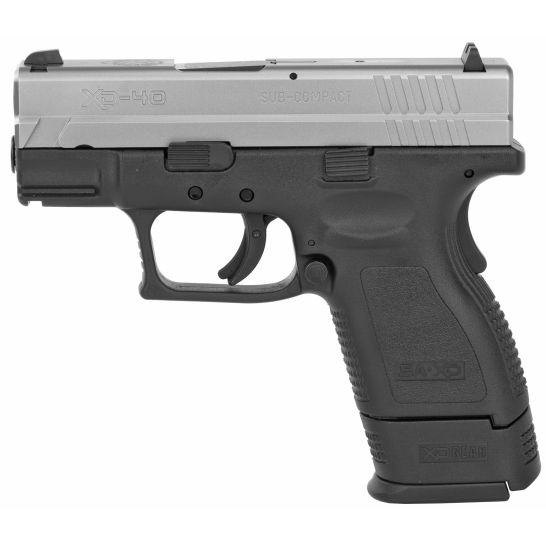
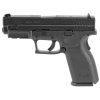
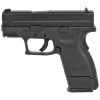
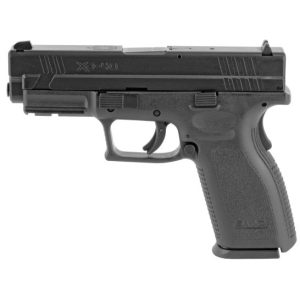
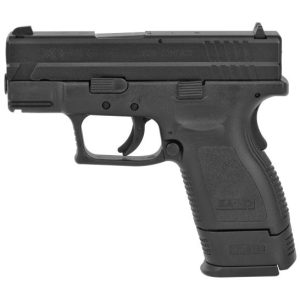
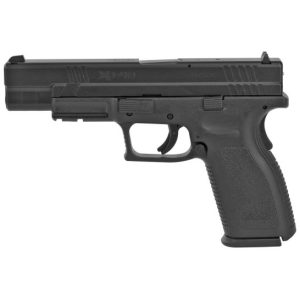
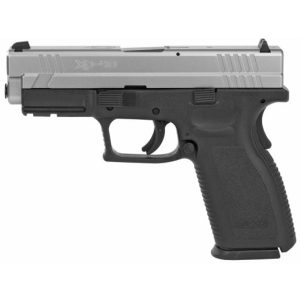
Reviews
There are no reviews yet.